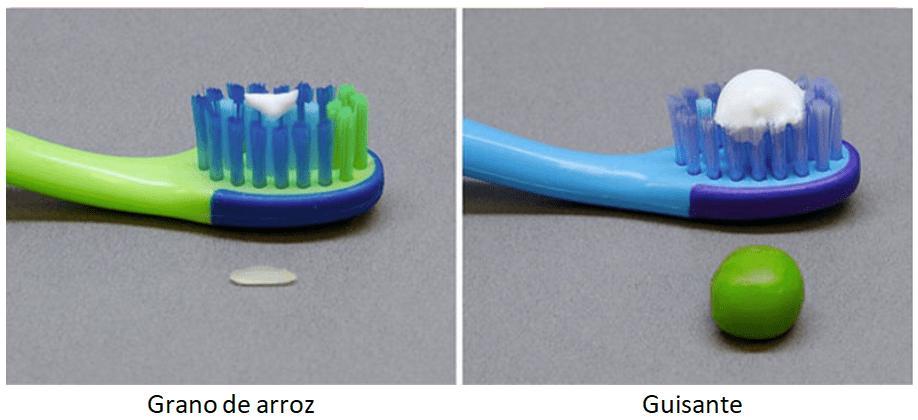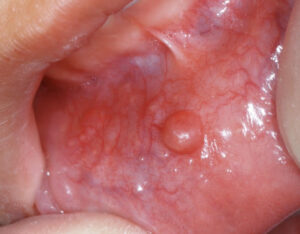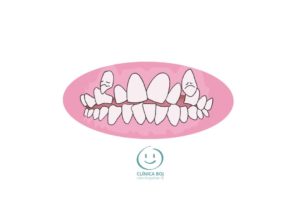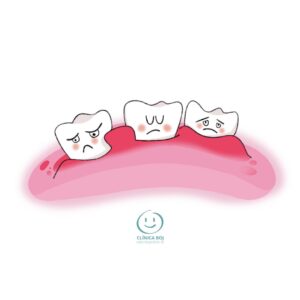Brushing children’s teeth: when to start?
Brushing children’s teeth is a need for them to grow up healthy and avoid tooth decay.
When should I start brushing my child’s teeth?
Helping to brush children’s teeth produces proper oral hygiene and healthy adult teeth in the future. Undoubtedly, it will help remove plaque and prevent the formation of bacteria. In addition, teeth cleaning will prevent staining and stimulate healthy and free-bacteria gingival tissues.
Also, it stimulates the production of saliva, which acts as a pH regulator. This happens when applying specific ingredients in the toothpaste for caries prevention which will also prevent gum disease and sensitivity problems.
According to the American Academy of Pediatric Dentistry (AAPD) all children should see a dentist before their first birthday. This should be so, even if they have no dental diseases or problems. The objective of this measure is to stimulate health promotion and prevention in every child.
In this first visit, the dentist will be able to make a general assessment of the baby’s risk. Also, he/she will analyze the history of the patient and propose the best guidelines to have proper oral health.
When to start brushing children’s teeth?
Tooth brushing should begin when the first tooth appears. This normally happens, approximately from 6 to 8 months of age (sometimes even 12 months). Cleaning your teeth and gums should be done at least twice a day.
Manual toothbrushes used in children should have a small head. Normally, with a rounded front part, soft and smooth bristles and with a long and rounded handle. As the child grows, we will adapt the size of the toothbrush to a slightly larger one, maintaining the aforementioned properties. It is recommended that tooth brushing should be assisted by an adult until approximately 8-10 years of age.
What is the importance of brushing teeth?
We must not forget the use of dental floss and this must be supervised or performed by an adult. Undoubtedly, its use between teeth that have strong contact is of great importance.
Toothpaste should also be included from an early age. However, we must be very careful with the amount and fluoride concentration we use.
In babies from 0 to 2 years of age
First, we recommend an amount of toothpaste with concentrations of 1000 ppm of fluoride ion. This information can be found on the back of baby teeth toothpaste tube. At this age, the amount should be only one scraping (smear) of toothpaste or the size of a rice grain.
From 3 to 6 years of age
Then, from 3 to 6 years of age we can use toothpaste with concentrations of 1000 ppm of fluoride ion. Nevertheless, the amount should now be increased to a pea sized amount.
For children 6 years and older
At this age, we can use toothpastes with concentrations of 1450 ppm of fluoride ion. This is the same concentration that can be used in adults and the amount should be the size of 1 cm.

Size of rice grain Size of a pea
There are toothpastes with a higher concentration of fluoride. However, this type of fluoride toothpaste will be indicated by the pediatric dentist. He/she will make a professional assessment of the child’s risk according to the case.
What children are at high risk of tooth decay?
Normally, toothpastes have age recommendations written on the tubs. Nevertheless, we must change these recommendations when needed according to individual risk of caries.
So, standard policy is to use 1000 ppm from the appearance of the first tooth until age 6. Then, 1450 ppm from 6 to 12 years, and keep 1450 ppm or go to 2500 ppm from 12 years on.
But, these doses have to be changed depending on the individual risk of the pacient. That way, toothpastes of 1450 ppm can be used before age 6, of 2500 or even 5000 ppm before age 12.
In summary, we consider a higher risk in:
a) children with decay in baby teeth,
b) cases of hypomineralization in primary teeth, and
c) cases of molar-incisor hypomineralization (HIM) in permanent teeth.
What are the general recommendations to follow when brushing teeth?
We recommend the following steps:
a) Dedicate two minutes to gently brushing
Never forget to brush at least twice a day, with a manual or electric toothbrush.
b) Use the needed toothpaste
with the proper parts per million of fluoride (ppm), according to the individual risk of decay.
c) Your brushing technique should cover all chewing surfaces of the teeth.
To end, also use floss if the surface between two closely spaced teeth is not accessible.
In conclusion, tooth brushing habits should be established from a very early age to keep good dental health. This, together with a sugar free healthy diet, will permit having teeth without caries.
References:
Sociedad Española de Odontopediatria, Protocolo de diagnóstico, pronóstico y prevención de la caries de la primera infancia. Julio 2017. Pg. 1- 11
ALOP. Guía de salud bucal infantil para pediatras. 2015. Pg. 1 – 10.
Policy on Use of Fluoride, Council on Clinical affairs. Revisión 2018. AAPD.






